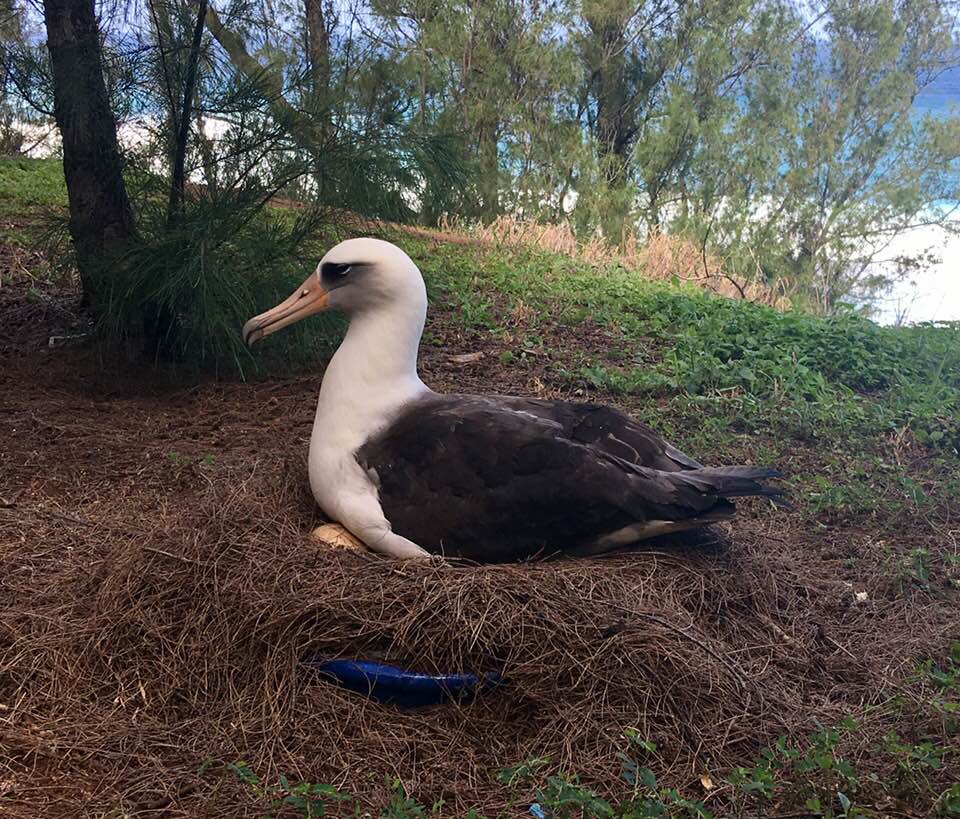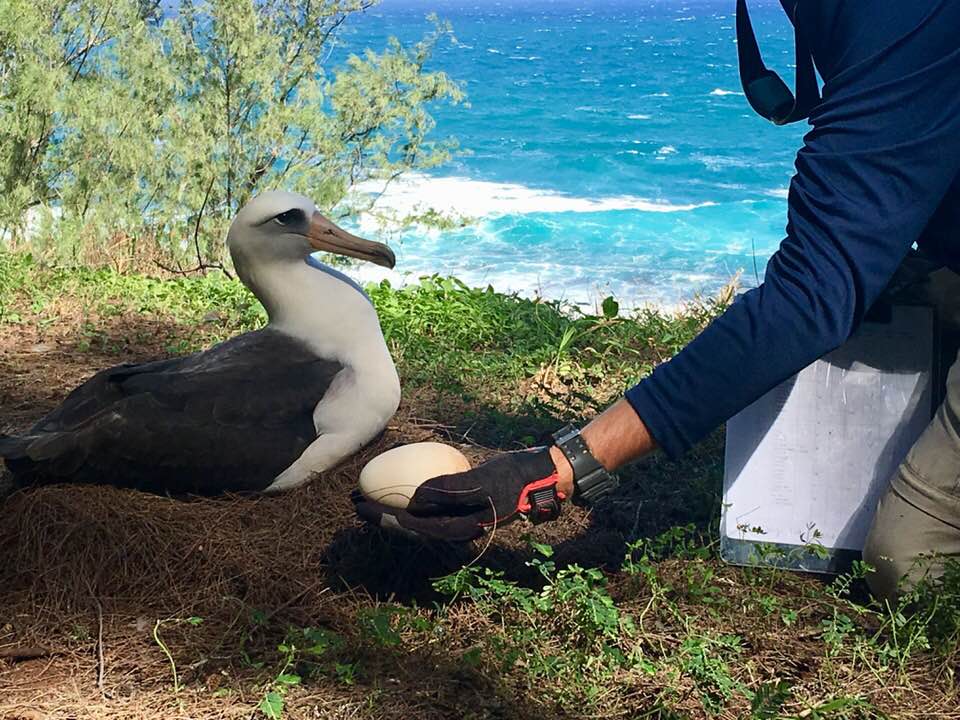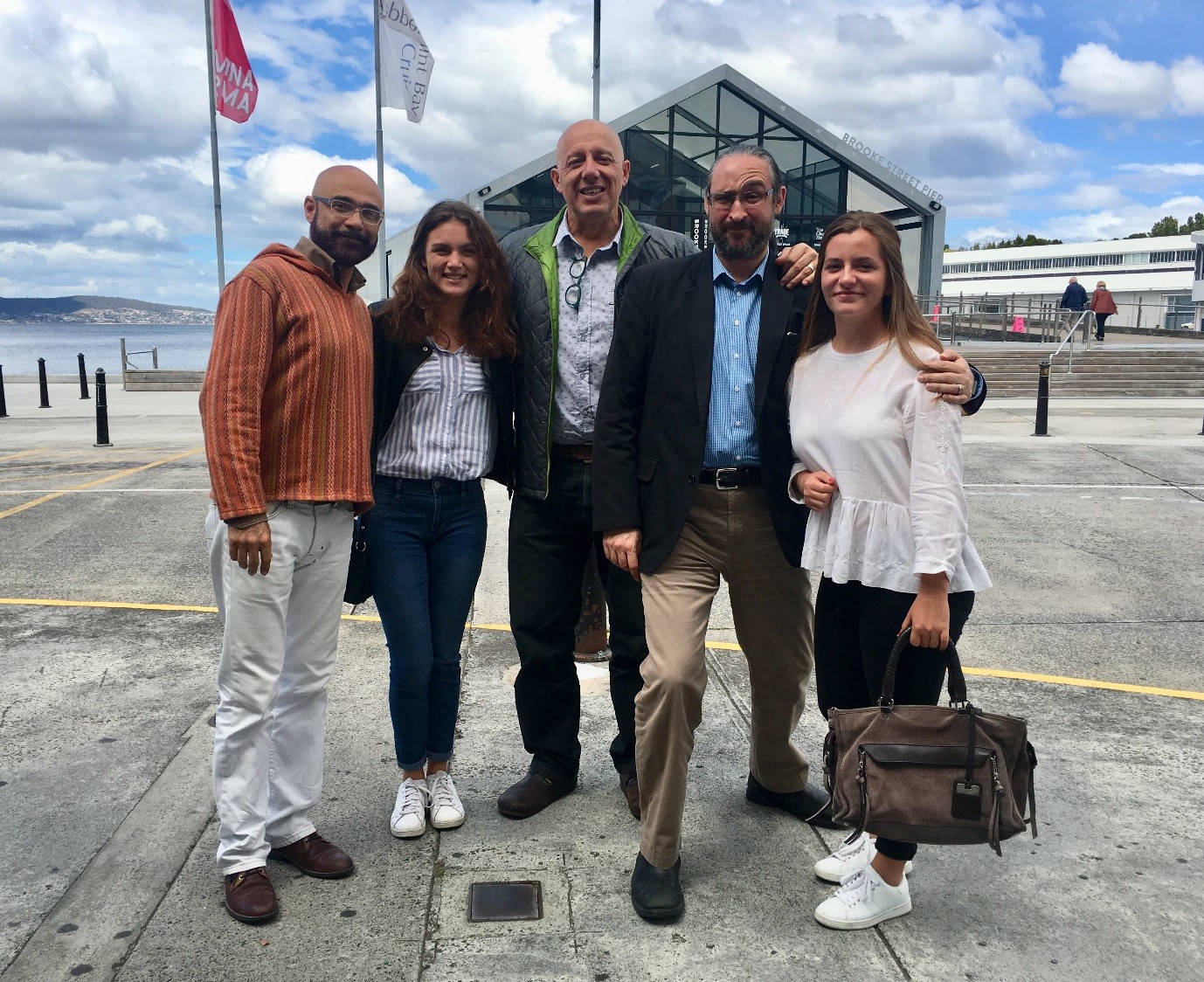On the Hawaiian island of Kauai there are two remarkable “albatross facts”. Firstly, much of the island’s globally Near Threatened Laysan Albatross or Mōlī Phoebastria immutabilis population breeds right among the island’s human population, making their nests and rearing their young in private gardens, back-door yards and golf courses (click here). Nowhere else in the world can an albatross be called a garden bird.
Secondly, and surely a consequence of living so close to albatrosses, is that there is a genuine affection among Kauai residents for “their” birds. Signs go up warning vehicles to drive slowly past displaying birds, lawns are mowed around occupied nests, regular appeals go out to keep dogs under control, feral cats are trapped and fences are paid for to keep pigs and dogs away from nests on rural properties. A webcam that is aimed at an occupied nest each year can be followed live. Above these activities, some concerned citizens, such as Cathy Granholm of Princeville, are going further, recording colour bands and following the fortunes of individual birds, photographing them and posting their observations to websites, blogs and the social media, producing artworks and plush albatross toys ("plushies") and even writing books for adults and for children about the Mōlīs.
One of the most active groups is the Kauai Albatross Network, founded by author, photographer and third-year Safina Center Fellow, Hob Osterlund, and supported by members Louise Barnfield, Susan Dierker and Kim Steutermann Rogers.
Hob has supplied ACAP Latest News with the following information and photographs on an intervention to help a Laysan Albatross pair hatch an egg for the first time in years of trying unsuccessfully.
Fergie and Malia are members of a female-female Laysan pair that have been together on Kauai since at least 2010. Every year since then both their eggs get buried in the nest bowl and neither is properly incubated as a consequence. Fergie has a serious limp of unknown derivation, so it appears her attempts to kick out excess nesting materials may inadvertently cause her to dig a hole into which the eggs fall.
Following a consultation with biologists a circular ceramic tray lined with a foam pad was slid under her nest. The female-female pair was then given an egg deemed to be fertile by candling obtained from the US Navy’s Pacific Missile Range Facility on Kauai by Robby Kohley and Eric Vanderwerf of Pacific Rim Conservation – and the infertile eggs removed. The two females took turns to incubate their adopted egg, which has now hatched. The chick has been named Amos. ACAP Latest News hopes to report of Amos successfully fledging in a few months’ time.

Fergie on her nest after insertion of the blue plate under the nest - visible here

Fergie is given a fertile egg by Pacific Rim Conservation

Amos, hatched from the adopted egg, looks up from its "Blue Plate Special" nest
Photographs by Hob Osterlund
Hob writes of her fellow network members: "Susan Dierker created the plushies and wrote a children's book, Albatross of Kauai: The Story of Kaloakulua. Kim Steutermann Rogers sells photographs on https://www.albatographer.com/ to raise funds for Mōlī conservation. Louise Barnfield posts messages and photos on Facebook of the birds nesting in her yard".
Click here to read about artifical nests for albatrosses in Australia.
With thanks to Hob Osterlund, Kauai Albatross Network.
John Cooper, ACAP Information Officer, 07 March 2018


 English
English  Français
Français  Español
Español 





